Why should anyone Create?
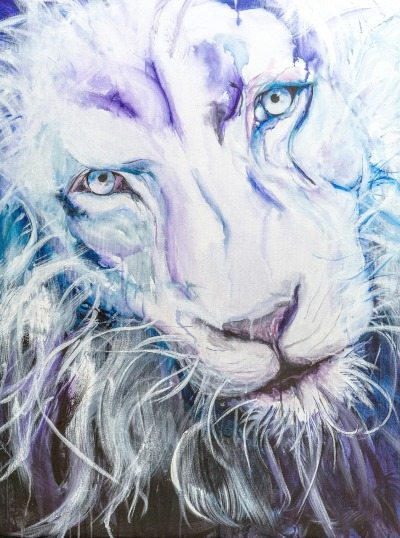
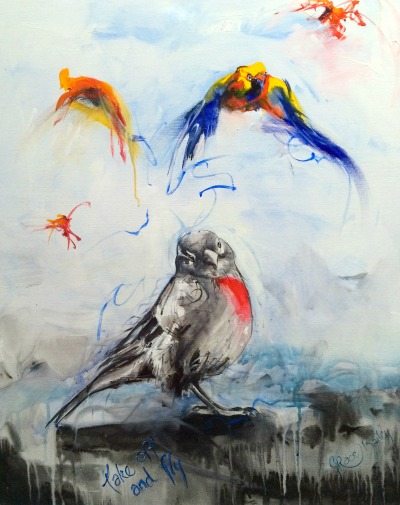
If you accept the premise that we are made in the image of the Creator, we are born therefore with a creative nature. It makes sense therefore to make space in our lives to pursue some sort of creativity. That doesn’t necessarily mean art or photography or any particular field of what is commonly accepted as creative endeavor. Gardening, cake decorating, basket weaving, mosaics, 3D modeling and a myriad of other things can all be creative. The list is endless, regardless of whether our society affords it much cultural significance. Oftentimes, however, that giftedness is taken for granted or denigrated because of prevailing cultural norms. For instance, cake decorating and knitting were traditionally female activities and not seen as creative as ‘fine art,’ but rather a craft.
If we are all created with a measure of creativity, clearly it’s not a level playing field. Some people obviously have more than others. How I describe it is this: if we start from the premise that everyone is at least a little creative (reflective of His image) we all fit onto a scale of 1-100. Some people start out in the 90+ range, and some start out down a lot lower. But everyone fits along that scale to some degree.
They may not recognize it or value it, but I believe it is an intrinsic part of every human being. However, so many people accept the lie that they are not ‘creative’ because they feel they can’t draw or play a musical instrument. The reality is that they just haven’t learnt how. Or they haven’t found an area of creativity that inspires them. Growing things is creative. Designing traffic flows can be creative. In fact much that is productive can be seen as creative.
I say all this because I believe that everyone has creativity inherently built into their DNA. Sometimes needs encouragement to reveal it. Often it’s a mindset that they aren’t creative. Even people who believe that they are entirely logical and not artistic at all have some area of creativity that they could explore. I believe it should be developed for complete rounding as a created being of the Creator.
But why should we be creative?
I’ve come to recognize it as an intrinsic need in our lives, but why should we be creative? It was a question that I pondered for some time until I was led to the verse in Deuteronomy 11:9, where God lays out blessings for the children of Israel if they heed His instructions. It speaks of a ‘land flowing with milk and honey’. Millennia later, that phrase still means having an abundance. In order for the land to be plentiful enough for bees to be prolific and cows to produce so much that it felt as if the land were flowing with milk and honey, you’d need a lot of rain, (input), growth, (learning) and productivity (output). In other words, here was this land that God designated as blessed and as His ‘special’ place, which describes a very productive place. If Israel is a type of what His beloved creation is meant to be, the land was meant to flow with productivity and we, as His special, loved children, are meant to be similarly productive. The bottom line of creativity is that it produces stuff.
Changing Lives
The right kind of productivity changes people’s lives. Perhaps the greatest example of this was the explosion of creativity that occurred during the Renaissance that changed the whole of western culture, bringing a gradual end to centuries of ignorance where very few people could read, and instituting education – at least for the wealthy. Similarly, a time of intense creativity birthed the industrial revolution and in more recent times, the technological revolution came out of the invention of computers and has probably touched every human being on the face of the earth.
In each of those cases, if the originators had not pursued their creativity, those world-changing inventions may not have come about. Of course the line between work and creativity is sometimes gray, but the basic premise remains: that we are meant to be productive, and creativity is a basic component of growing productivity.
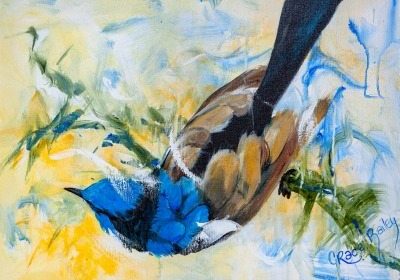

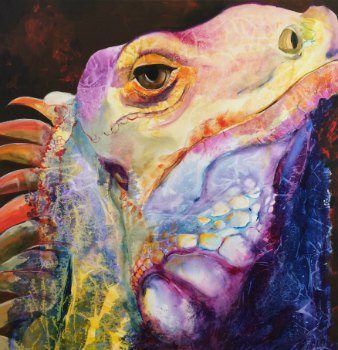
Why Create?
If you decode the imagery of agricultural abundance referred to in Deuteronomy into artistic practise, the rain or input is the initial effort or desire to create, possibly influenced by the degree of latent talent. Translating that into horticultural references, you can have bulbs that have a high degree of potential for exquisite blooms, but without the right conditions, will have varied results, or worse, may never flower. Similarly, you can have the most talented beginner who may not reach their potential without the right conditions. Isolation, depression, lack of self-belief, poverty or any number of detracting factors can rob and the results are compromised with their potential lost. Not everyone is extremely talented, but the same concepts apply where circumstances rob the individual from believing that they are even creative at all. I believe that everyone’s creativity needs nurture and ‘feeding’.
The growth phase of the horticultural analogy equates to ‘learning’ being considered and diligent skills acquisition. If plant growth isn’t fed with fertilizer and have the right conditions, the plants don’t thrive, meaning that bees have no verdant growth to pollinate. If you have sporadic ‘rain’ or exposure to skills building the understanding or climate for growth is likely to be stilted. If the skills acquisition isn’t considered and diligent, resulting in improvement rather than playing around and constant experimentation, the results can be limited.
The productivity or output stage is the gradually improving works that reflect years of skills building and personal assessment creating works that are valued by others.
Start Your Own Prophetic Art Adventure With The 'Painting With God" book.
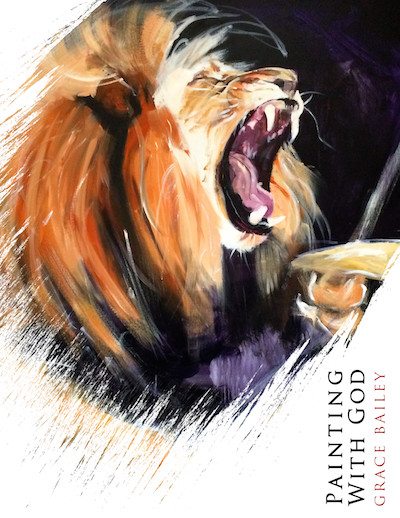
You'll be guided by experienced artist, Grace Bailey, through ten colorful chapters on how to get started, face your fears and create images that tell God-stories.
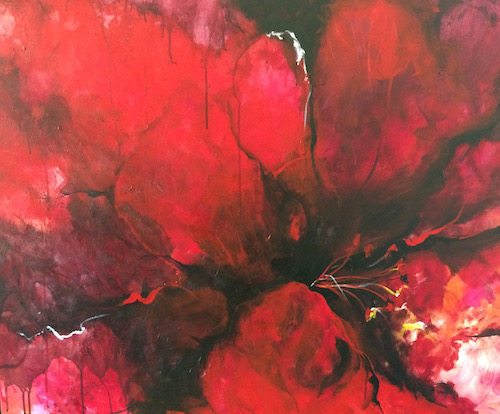

We Need Fat On Our Souls
That’s the bigger picture of the ‘why’. My take on the more personal reason is because it makes space for the soul. If you accept the premise that our soul is our mind, will and emotions, it’s fair to say that those parts of us can take a battering through life. Most of us start out full of hope and belief that life will work out. Depending on how we’re brought up and the degree of security and resilience that is built into us, our souls can be lean or well covered. (I’m not entering into a psychological discussion here, just go with the analogy.) If life is pretty good, you could image your soul as a fat, chubby, happy baby.
The movie “Jarhead” attributed Ernest Hemingway with the quote that ‘war strips the fat from the soul’. (26) The ‘war’ that robs that fat is the unpleasant circumstances that life throws at us and that we have to contend with. I believe that the fat of the soul is the amount of the stuff that makes us human, like the ability to love, and to empathize and care and to be impacted by beauty, to enjoy good food and conversation. People without much soul-fat like abused children often show lack in some of those areas. In short, the stuff that can make us happy. You’ve no doubt heard lots of sermons about maintaining joy in the face of what life throws at you, but there are certain things that helps each of us enjoy life.
Along the way relationships, accidents, turmoil, and any number of things can rob us of that natural buoyancy. I see that buoyancy or resilience as residing in the ‘fat of the soul.’ If all life consists of work and existence only without much fun, that fat deposit runs down till the leftovers are emaciated and brittle or closed down in a half-life existence. Imagine a thin, snivelling child devoid of love.
Feed That Inner Child!
Creativity has the potential to start to restore that ‘fat’ because it is productive, and while it can be incredibly frustrating while you’re learning, it can also be deeply satisfying. I’m not saying that making a cake on a Saturday afternoon is going to make everyone feel better. In fact, I’d find that a loathsome chore. All that work and cleaning up just for food? You can see I’m not a cook! I don’t derive great pleasure from planning meals or feasts or anything to do with food, but I used to know a woman who read cookbooks for recreation. I couldn’t think of anything more boring! The point is that one person’s creativity may not cut it for the next person, but if we are meant to embrace some area of creativity, it’s important not to discount it with the blanket notion that creativity has passed you by. Not everyone is going to be a prophetic artist, but everyone should explore an area of productivity that is creative, for the sake of their soul. I’d even go so far as to say for the sake of the resilience of their souls.
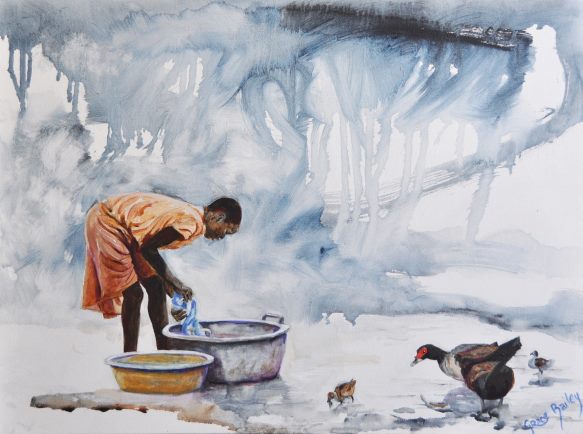
Not All The Same
My husband likes to get out in the bush on his own and hunt. That means no coffee, no conversation, no hot water, no clean sheets, no bed and worst of all, no people. But that’s what floats his boat. It restores his soul to get away. On the face of it, it’s not creative but it is productive in that he has time to think. And we rarely have to buy meat! As well as that, he is never happier than when he’s out in his garden, which is patently creative. Of course, I’m not saying that creativity is the only answer, but it is one that many people ignore because of perceptions that they’re not creative. Both activities recharge him. Both activities leave me entirely bored, but one person’s creative endeavor doesn’t need to fit another’s.
Sometimes though, that creativity needs a kick-start and that’s one of the areas that prophetic art can be used to unlock people’s desire to ‘have a go’. It unlocks the imagination. Where art has been largely discounted for 150 years in churches, the emergence of prophetic art is rebirthing an acceptance of it. Where before it was used merely as decoration, or in earlier times, as an instrument of indoctrination, now it can be a living vibrant thing that speaks God’s messages.
If we accept that everyone can and should be creative, it’s very obvious that some are more creative than others. My observations lead me to think that many of the highly creative types have similar temperamental characteristics that make life interesting for both themselves and anyone who has to Iive with them. A book I’d highly recommend on this topic is Living With a Creative Mind by Jeff and Julie Crabtree. (27) It clarified several personality traits that I had lived with but had no understanding of. I didn’t understand the need for change and new input and the acute sensitivity that I had lived with before that book. One thing that I did understand a bit from very personal experience though was the black dog.
The Mongrel Black Dog
It really is a mongrel cur. It’s not a purebred but a skulking, thieving, degenerate entity that seeks to rob many creative personalities from their potential, from contentment, from peace. Churchill referred to it as the black dog that lurked on his heels. Depression. The sort that sucks the life and the promise out of a day, or a week, or longer. The sort that makes everything too hard, even the things that you know you should deal with. I’m fairly well acquainted with that mongrel cur despite years in church and loads of prayer. Let me stress from the outset that I have no academic understanding about it other than my own experience and that I don’t pretend to. What follows is all personal opinion and experience, for what it’s worth, but it is honest.
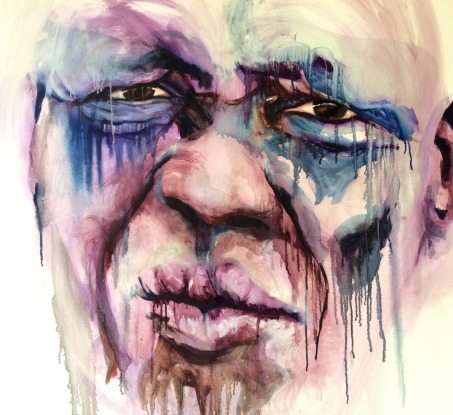
Being Honest
Sometimes that dog leaves you so raw that functioning is almost impossible. At times like that, the miry clay threatens to envelop and suck you down into an oblivion of despair, never to return. The thing that it robs is hope. Without hope, it’s impossible to create or be productive or much else that’s worthwhile. I’ve had times when it lasted for months and life didn’t seem to be worth getting out of bed for. At times like that, trying to paint is nigh on impossible without external impetus.
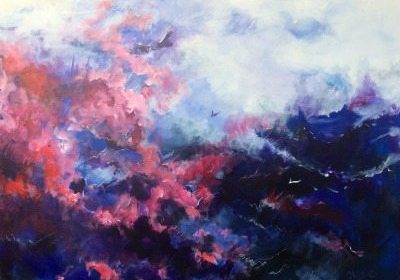
Things That Can Help
A doctor told me once that depression is a result of a serotonin imbalance along the lines of an insulin imbalance being the cause of diabetes. Don’t quote me on the technical details; let’s just go with the overall concept again. If it is a chemical imbalance and that chemical is now freely available, it makes sense to avail yourself of it. In other words, use anti-depressants. In the past I believed that they were an admission of defeat or a denial of the power of God, but only when I was younger and more naive. Now I believe that no-one would expect a diabetic to go without insulin and neither should anyone expect a depressive to go without anti-depressants. In other words, if you have a headache, take a pill! Depression is a mongrel cow of a ‘headache’ and taking pills can potentially help.
What I Do
I’ve noticed a couple of things that help for me and again, I stress that this is all anecdotal. I’ve found that if I keep busy and or have a viable project to work on, the depression is kept at bay. It is only when I don’t have a project that I’m working on that things get bad. I need to have something that I’m working towards, that I’m hopeful for and that I’m planning, to absorb my thoughts and exclude the negativity.
I’ve also found that exercise helps, although I’m personally not so good at this. It seems to get things moving and shifts the blues. I’ve heard that people can actually get a high from exercise, although this is definitely something I have no personal experience of! I have noticed, however, that even the small amounts of exercise that I do can help.
The best thing though is to get out and mix with other positive people. It gets you out of yourself and shifts the focus from the circumstances. Isolation, on the other hand, often seems to compound the negativity. The miserable voices become harder to exclude so they set up their incessant litany, which can seem to get louder and louder. Being with other people drowns out those ‘voices’ or negative thoughts.
The Value of Community
In my experience, artists working and continuing in isolation don’t have an easy ride. Living in regional areas as I have done can make it difficult to meet other artists, especially Christians, but the time-honored practise of artists’ collaborative works. Van Gogh and Gauguin bounced off one another as did the Pre-Raphaelites and countless other groups through time.
I can’t over-emphasize the value of being able to discuss artwork and ideas with other like-minded people. I’m usually amazed at the sense of awe I feel when I get into a room of like-minded artists. It’s like I’ve found my tribe. These people are likely to ‘get’ me, to understand all the ups and downs, to be interested in what kind of paint works best and how that pthlalo turquoise blue sits next to that cadmium red. Who else in your circle of non-artist friends will engage in that kind of conversation for long? You can see eyes glazing over at a hundred paces with the result that the process of painting remains isolated and subjective.
Community can bring more objectivity to your process as the right type will give accurate feedback. A reasonably common trait of the very creative is wavering levels of self- confidence. ‘Is this any good? No, it’s really bad. Oh, maybe it’s okay’? Having other honest but supportive people around can bolster that fragile self-confidence and bring inspiration and a broadened perspective. I’m not advocating being surrounded by people who will only say everything is good, but by a genuine and objective community. Having such a community can also bring encouragement and direction to keep going in the face of the ups and downs of rejections etc.
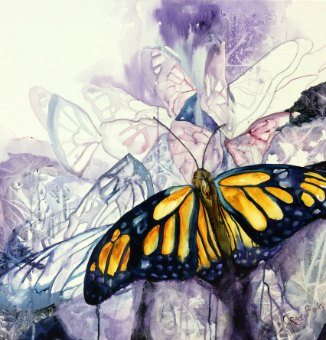
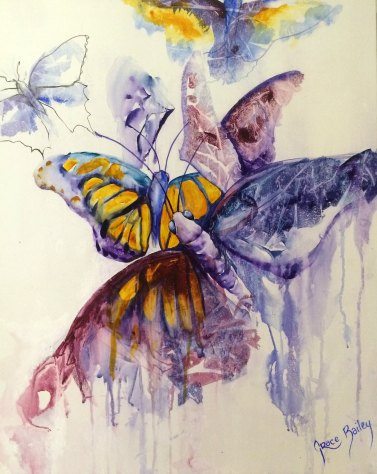
Positive Side Effects
If utilized properly, a concentration of artists can pool together to sell together, from collaborating in exhibiting to artists’ trails and art fairs. They can share the costs of production, printing and publicity, as well as discoveries and methods.
On the other hand, working in isolation means that all the work produced is subjectively critiqued, which can result in work, which may or not may not be moving in a positive direction. It can produce repetitive work, which feels like it’s stuck in a rut. I’ve met older artists who have worked alone for years who realize that their work is stilted and not going forward, but who don’t know how to move on. Sometimes being able to talk to a like-minded person can bring what’s needed. It’s hard to self evaluate your best work and be tough with the work that is not so good. Having other people around who are honest and open can open up real and objective assessment.
I’ve suffered from not having access to a community for many years. I lived in regional areas and was usually the only developed painter in the church. It meant that my arts practise remained separated from church life – until the advent of prophetic art. It’s one of the reasons that I needed to go on the journey of discovery to find out what it was all about and where it fitted because I had no previous parameters or reference points with which to gauge it. As there were no Christian artists around, one of the best things I did was to get involved with a group of local artists who, though not believers, provided conversation, objectivity and encouragement. We met regularly and often and I gained so much from that group. It did, however, hamper the foray into prophetic art as I needed to leave behind the pseudo-intellectualism of contemporary arts critique in order to not be disparaging about some of the imagery.
What Has All This Got To Do With Painting With God?
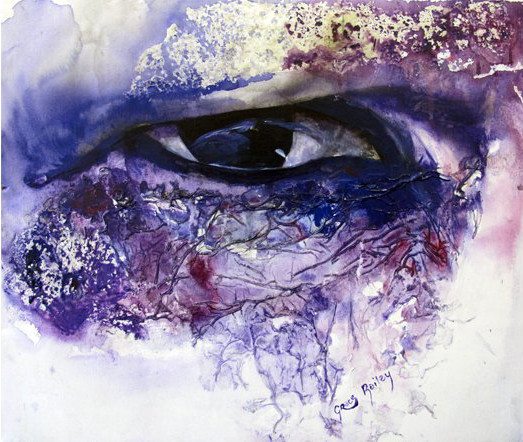
So what has all this got to do with painting with God? In writing the points above, I’ve chosen to be open and transparent about my experiences because I believe that many creatives are subject to similar circumstances that can cause much angst and misunderstanding. Couple that with the youthful but sometimes common belief that God is some sort of a fairy godmother who won’t let anything bad happen to us, and that vivid imagination can take us for a merry ride through hell. These are some of the things that I’ve struggled with and I share them with the hope that others may avoid some of that lack of direction and understanding of the what and the why of living as a Christian creative.
The purpose of this book, as well as clarifying what prophetic or worship art is, is a call to excellence on the part of artists to develop their skills so that they can create the best that they can in collaboration with the supernatural. It’s a call to go on improving and seeking to create better works for a lifetime and not to settle into accepting second best careers or to take the gift for granted because of past rejections or trials. I believe that God is creating a renaissance or a renewal of art and in particular, worship art that glorifies Him and that will take an army of artists, worldwide.
